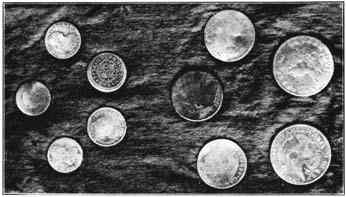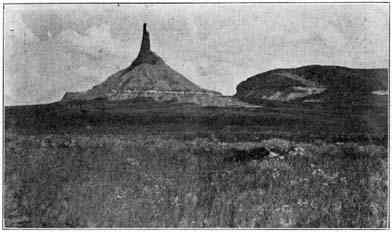Coins Found on the Site of Old Fort Atkinson ers of a century has passed the evidence of human activity at this first Nebraska fort are still abundant. Great piles of brick and stone still cover the soil and every year the farmer's plow and gardener's rake bring to light evidence of those pioneer days. Probably near a hundred gold, silver and copper coins have been found there and thousands of military buttons and tools. Marked as the site of the first Indian council and first United States fort in Nebraska it will become in the centuries to be the great early historic spot within our borders. |
Chimney Rock of Captain Bonneville," and claimed for him the honor of first blazing the wagon track which soon after became the Oregon Overland Trail. After Bonneville came Nathaniel J. Wyeth, who followed Bonneville with a train of pack horses in the summer of 1832, crossed the mountains to Oregon and arrived at the mouth of the Columbia in October. In 1833 he returned to Massachusetts, but April 28, 1834, found him starting again from the Missouri river with a company of seventy men and two hundred and fifty horses on their way to Oregon. In the party were two scientists. Thomas Nuttall (whom we have met before) and J. K. Townsend. There are also five missionaries, among them Jason and Henry Lee. This party entered Nebraska May 12 in what is now Pawnee county and passed out of the present state June 1 when it reached Laramie fork, where it found a party of trappers building the first stockade which was afterward to become so noted as Fort Laramie. This expedition begins the real Oregon emigrant movement across the plains and continued in the general course taken two years' before,--up the Blues and Big Sandy, across the divide to the Platte and up the North Platte to South Pass. |
 |
 |
 |
 |
|
@ 2002 for the NEGenWeb Project by Pam Rietsch, Ted & Carole Miller |
|||

